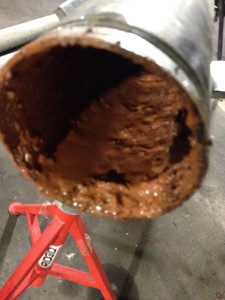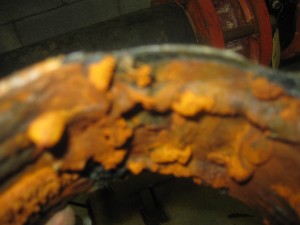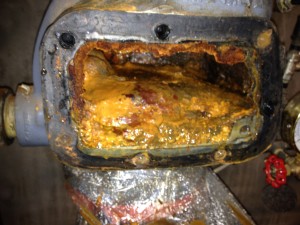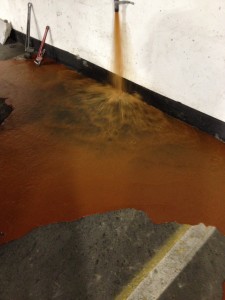Dry systems are used in areas that cannot maintain temperatures at or above 4 °C. They hold only air in the system’s pipes to prevent water from freezing and causing a pipe burst.
They are far more complex than wet systems, and in turn, require more frequent inspections, maintenance, and testing. In a dry system, water is held back by a clapper, which is held shut by the pressure of air from within the system. In the event of a fire, one or more sprinkler head(s) will “pop”, causing a dramatic drop in air pressure which allows the water below the clapper to force the valve open and cause a system “trip”. A trip will flood the system with water which will travel through all branches of the sprinkler piping helping to put out the fire.
Here at Omni we have numerous technicians with vast knowledge and experience working with dry systems, dealing with everything from routine monthly inspections through to system service.
Both monthly and annual inspections are required by code, and it is the responsibility of the building’s management to ensure that these inspections are carried out, as they will be liable should an inspector come to check on the system’s inspection history.
Monthly Inspections
Due to the complexity of these systems, monthly inspections are of great importance to ensure the system works as intended if a fire ever starts. A monthly inspection consists of external visual checks on all aspects of the system’s core. Checking the valve enclosure & trim, ensuring the right lines are opened/closed, that the gauges are working properly and that all pressure values on the gauges are correct are all key components of a routine monthly inspection. Keeping on top of these inspections can save lives during a catastrophe, it is never good to discover a problem with the system when it is too late.
Annual Inspections
Annual testing is much more tedious and telling of what shape the system is in. For annual tests, the system is intentionally tripped and allowed to flood with water from the main city line. This allows technicians to check the pipes for possible leaks, and the sprinkler heads for damage/faults. The plate covering the value must also be removed to ensure the clapper is opening, closing, and locking properly. Once a thorough inspection has been completed with water in the system and the system has passed, technicians will then ensure no water remains in the system by dripping it dry. Any residual water can lead to frozen and burst pipes. After the system is completely free of water the clapper is reset and the system is re-pressurized with air and is once again ready to defend against possible fires.
Here are a few examples of a dry system that has not been properly maintained. With monthly and annual inspections this can be avoided ensuring a fully operational system.





